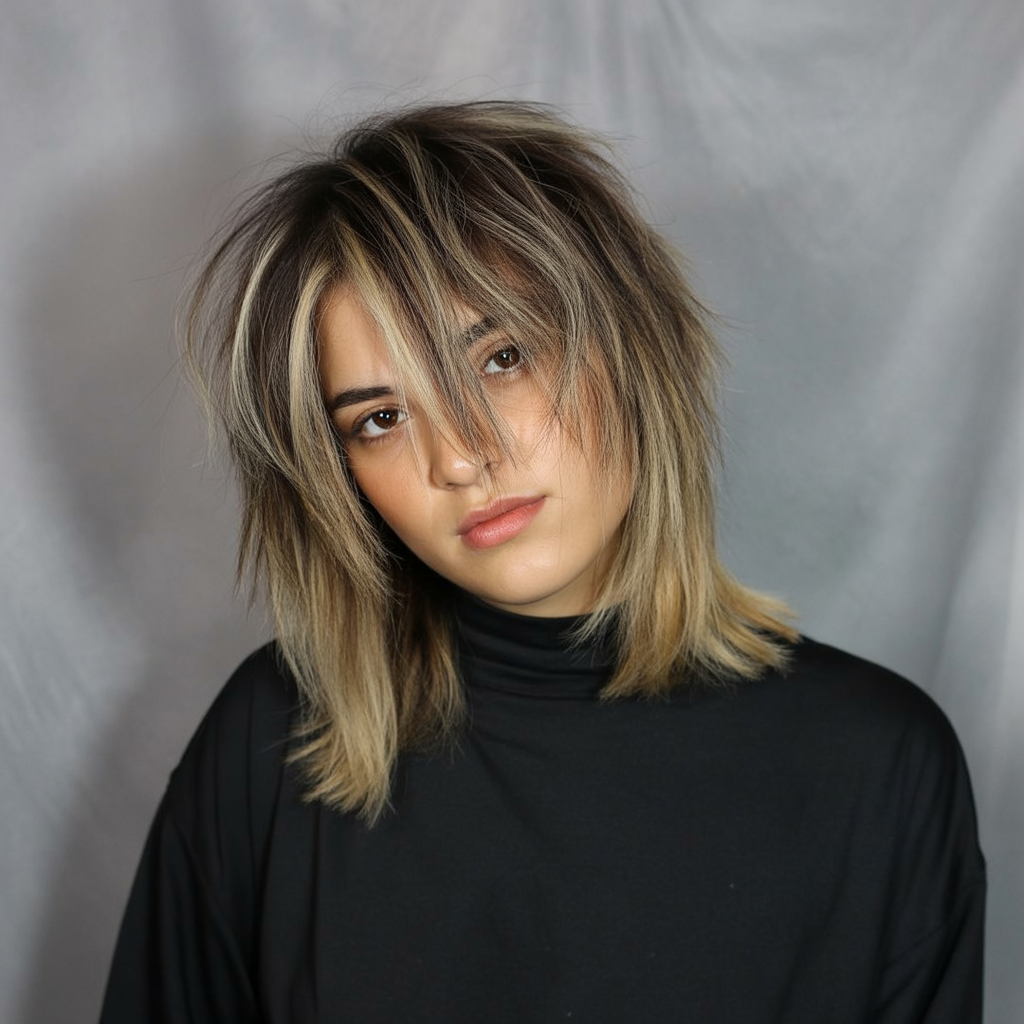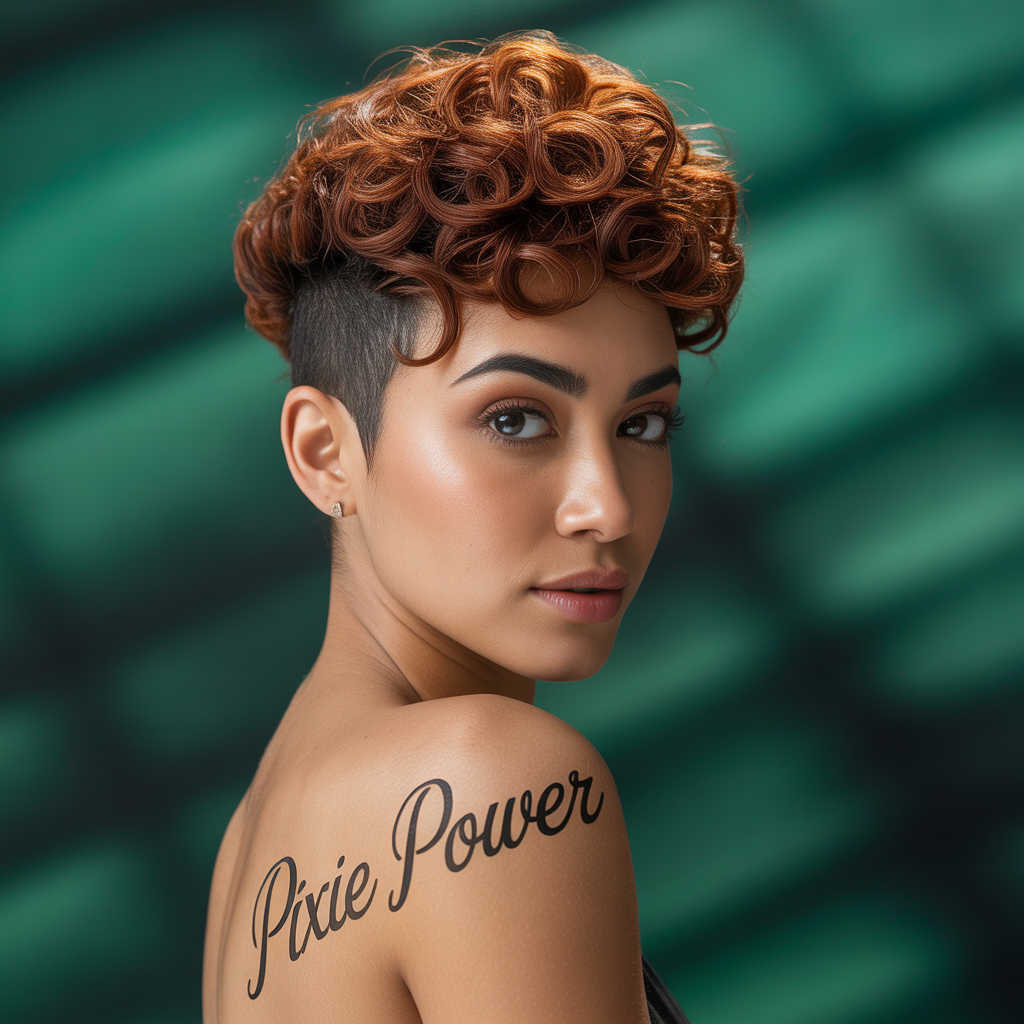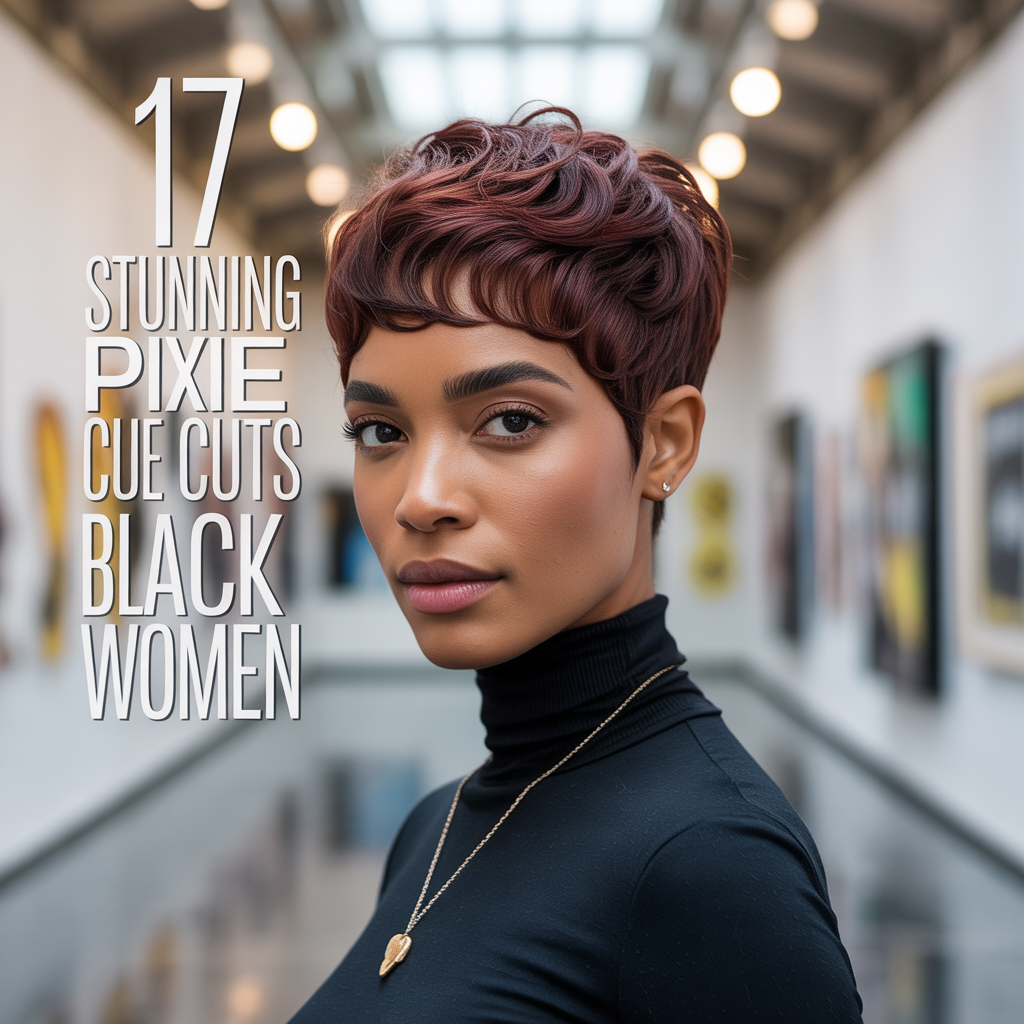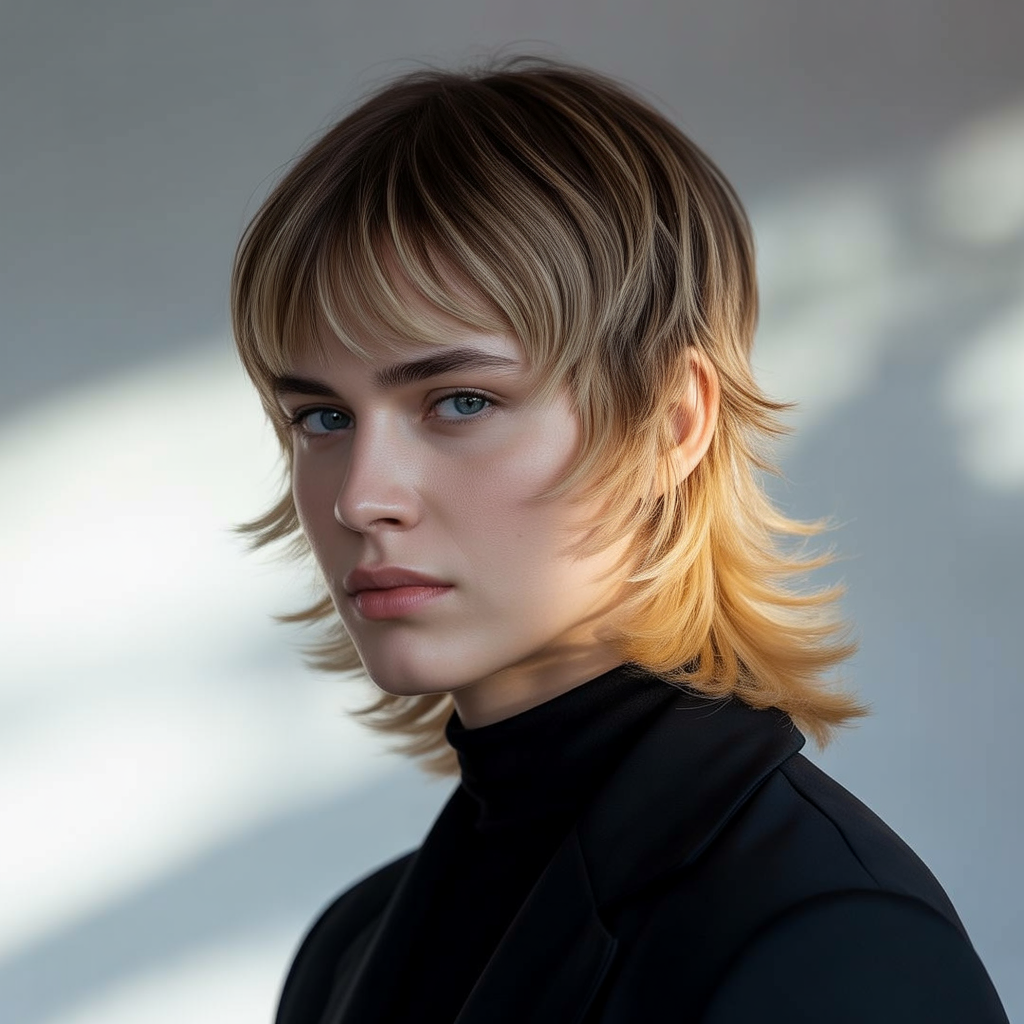13 Best Wolf Cut Inspiration: Styling Tips & Modern Looks
If you’ve scrolled through TikTok or Instagram lately, you’ve probably seen the Wolf Cut that shag-meets-mullet hybrid with tousled layers, airy volume, and an effortless, slightly wild vibe. It’s edgy without trying too hard, and flexible enough to flatter different face shapes, hair types, and lengths. Below, you’ll find 13 creative wolf-cut ideas, tons of practical styling tips, and answers to the most-searched questions people have before they book the chop.
Soft, Wearable Wolf Cut for Everyday

Want the trend without going too extreme? Ask for soft, blended layers that feather around the face and a gentle, rounded shape in the back. Keep the length at or just below the collarbone so you can still tie it up. Styling is minimal: blow-dry with a round brush for lift at the crown, then add a light cream for separation. This gives you all the movement of a wolf cut without the heavy rock-’n’-roll drama.
Curtain Bangs Meet Wolf Layers

Curtain bangs are a natural partner here. They frame the eyes, soften a strong jawline, and transition seamlessly into the choppy top layers. On fine hair, point-cut the ends so they don’t look bulky; on thick hair, a bit of interior texturizing helps the bangs sit perfectly. A heat-protectant and a 1-inch iron are enough to add a relaxed bend mid-length, blending fringe and layers like they were born together.
Curly Wolf With Maximum Bounce

Curls love a layered shape, and a wolf cut can unlock spring and volume without a triangle effect. The trick is curl-by-curl cutting (preferably on dry hair) and weight removal around the crown so it doesn’t collapse. For styling, rake in a medium-hold gel on soaking-wet hair, then scrunch with a microfiber towel. Diffuse on low heat, low airflow to keep definition. Finish with a light oil only on the ends to avoid weighing down the crown.
Micro-Fringe With Attitude

Looking for something editorial? Pair the shaggy silhouette with a micro-fringe. This short, straight-across bang contrasts perfectly with shaggy, piecey layers. It suits oval, heart, and round faces—just keep the fringe slightly curved to avoid a severe line. Style the fringe flat with a mini straightener, then mist a workable spray over the rest to encourage piece-y texture.
Long Wolf With Feminine Flow

You don’t have to go short to enjoy this look. A long version keeps the dramatic layers and crown lift but leaves length to show off waves or coils. Ask your stylist for elongated face-framing that starts at the cheekbones and a softer “mullet moment” in back—more modern rock goddess than 80s throwback. Air-dry with a salt spray, or twist random sections around a large barrel for plush movement.
Wolf Cut for Fine Hair That Still Looks Full

Fine hair can absolutely wear this shape; you just need strategic layering. Too much texturizing will look wispy, so focus on shorter crown layers for lift and slightly thicker ends through the bottom third. Use a volumizing mousse at the roots and a lightweight finishing powder to keep the crown airy all day. Avoid heavy oils—swap in a shine spray if you need polish.
Thick Hair, Weightless Finish

If your hair is dense, the wolf cut is basically a permission slip to remove weight. Request internal debulking and shattered ends through the mid-lengths. This keeps movement without that bulky “bell” shape. A strong ionic dryer and a large round brush will prevent poofiness at the crown. Finish with a flexible-hold spray: you want air, swing, and separation—not stiffness.
Color Blocking to Highlight the Shape

Strategic color makes the shape pop. Try high-contrast money pieces around the fringe, or a lighter crown panel to accent the volume and texture. For something subtle, go for ribbon highlights a level or two lighter than your base to catch the layers. Balayage that trails off toward the ends reads beachy; chunky panels feel more Y2K. Either way, color placement should follow the direction of the layers to enhance movement.
Sleek-to-Textured Versatility
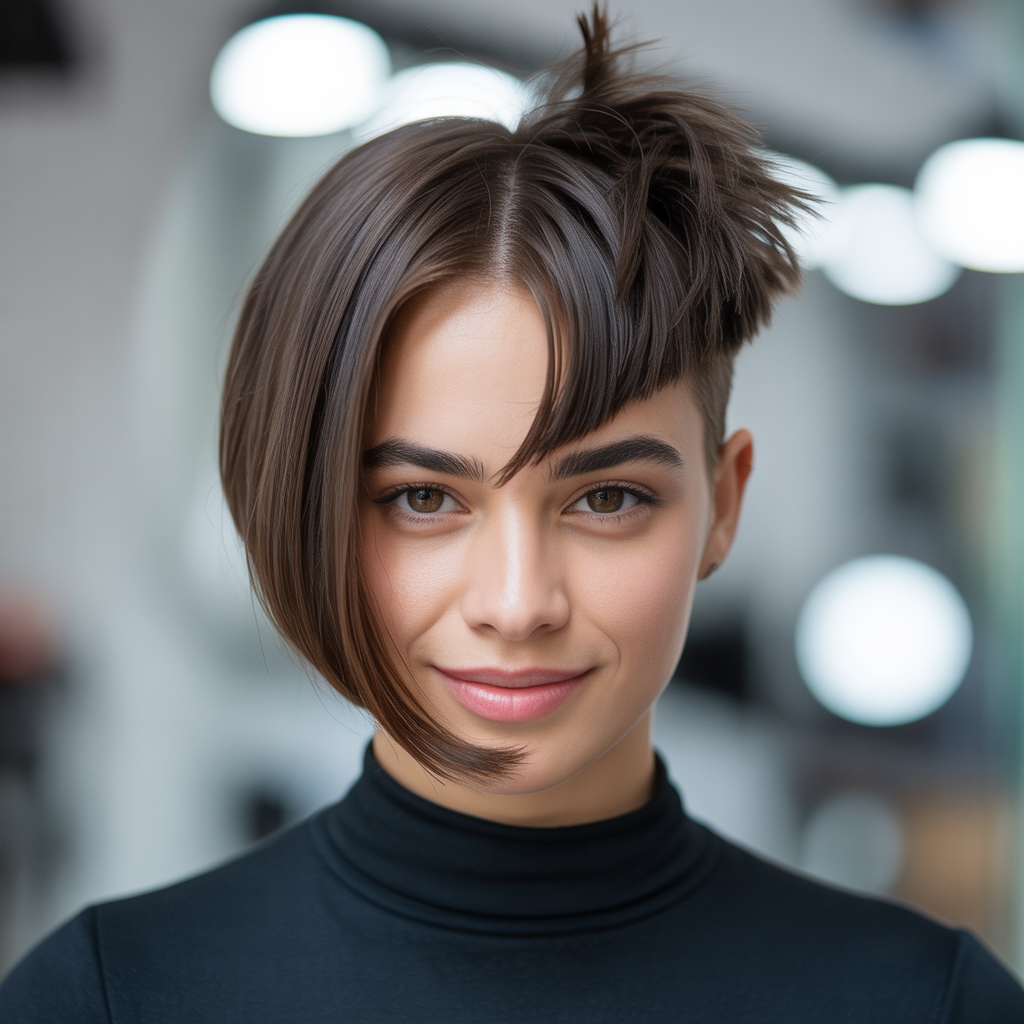
One reason this cut wins on busy mornings: it can be styled two ways. For sleek days, blow-dry smooth with a paddle brush, beveling the ends under. For textured days, apply a wave foam to damp hair, diffuse to 80% dry, then press in a matte paste to the crown and mid-lengths. You get polish when you want it and grit when you don’t—without needing a totally different haircut.
Short Wolf With Tapered Nape

Short hair lovers, this one’s for you. Keep the nape tapered and close, then carve in choppy crown layers and a longer, sweeping fringe. The close back showcases the disconnection and prevents a bulky silhouette. It suits straight and wavy textures and looks killer with statement earrings. Style with a pea-sized paste to pinch out definition along the top.
Protective Styling and Heat-Safe Habits

All that texture doesn’t require frying your hair. Build a small routine: heat protectant every single time, a weekly bonding mask, and silk/satin pillowcases to keep the fringe smooth. When curling, limit passes to one or two per section and stretch days between heat with a dry texture spray. Remember: the beauty of a wolf cut lies in its imperfect, touchable finish—chase vibe, not perfection.
Face Shape Guide for Confidence

Round: Try a longer fringe that parts in the center and layers that start below the cheekbone to elongate the face.
Square: Soften strong angles with wispy ends and more movement around the temples.
Heart: Keep volume at the sides of the head—not just the crown—to balance a narrower chin.
Oval: Lucky you—nearly any variation works. Choose fringe length to highlight your favorite feature (eyes or cheekbones).
Diamond: Add fullness at the crown and keep the sides a touch softer to balance width at the cheekbones.
Visit Also: Hairstyles Women Over 60
Maintenance, Trims, and Grow-Out

Expect to trim every 8–12 weeks to keep the shape intentional. The grow-out is forgiving: the layers mellow into a lived-in shag. If you’re stretching appointments, ask your stylist to preserve the face-framing and crown while leaving the bottom more natural. At home, a quick fringe dusting (done by a pro, ideally) can buy you time between full cuts. As your hair grows, lean on light texturizing sprays to maintain lift without adding bulk or stiffness.
How to Style a Wolf Cut: Step-by-Step
For tousled texture (5–7 minutes):
- On damp hair, apply a volumizing mousse at the roots and a light curl cream or foam mid-length to ends.
- Flip your head upside down and rough-dry until 70% dry, focusing the nozzle on the roots.
- Use your fingers to lift the crown while you finish drying, then cool-shot to set.
- Wrap a few random pieces around a 1–1.25″ iron away from the face. Leave the ends out for an undone finish.
- Emulsify a pea-sized matte paste between palms; pinch the crown and face-frame pieces. Mist a flexible spray to lock in airiness.
For sleek volume (10 minutes):
- Apply heat protectant and a smoothing cream on damp hair.
- Blow-dry with a round brush, lifting at the crown and beveling the fringe.
- Glide a straightener quickly through mid-lengths if needed.
- Finish with a shine spray, keeping it off the roots to preserve lift.
Product Playbook
- Root lifter or volumizing mousse: Essential for airy crown height.
- Texture spray or dry powder: Adds grip and separation without crunch.
- Flexible-hold hairspray: Keeps movement intact.
- Matte paste/clay: For piecey, editorial definition.
- Light oil or shine spray: Only on ends to keep the crown buoyant.
Salon Cheat Sheet (What to Tell Your Stylist)
- “I want a shag-mullet hybrid with crown volume and wispy, shattered layers—modern wolf cut, not retro.”
- “Keep the fringe soft and eyebrow-grazing; blend into face-framing that starts at the cheekbones.”
- “Remove interior weight, especially at the crown, but leave a bit of density through the bottom so it doesn’t look scraggly.”
- “I want it versatile—able to style sleek or textured.”
Common Mistakes to Avoid
- Over-texturizing fine hair: It can look stringy. Ask for subtle internal layers and preserve some bulk at the ends.
- Ignoring heat protection: Texture without protectant = dull, frazzled ends.
- One-length fringe with cowlicks: Work with your growth pattern; a micro-split in the center can be more forgiving.
- Too much product: This cut thrives on air. Start small; you can always add more.
Inspiration Pairings
- Soft glam makeup: Fluffy brows, blush-heavy cheeks, and a blurred lip contrast beautifully with the choppy shape.
- Grunge-lite: Smudged liner and a glossy lid amplify the attitude.
- Accessories: Thin headbands, mini claws for the crown, or a scarf tied behind the fringe to accent layers.
At-Home Touch-Ups
If your fringe drops into your eyes between appointments, twist small vertical sections and point-cut tiny amounts from the ends (if you’re confident). When in doubt, leave it for a pro. To revive flat hair on day two, flip your part, blast roots with a dryer for 20 seconds, then massage in a little texture powder at the crown.
Who the Wolf Cut Suits Best
Short answer: most people, with tweaks. Straight to wavy hair will show off the choppy silhouette; curls will get a rounder, romantic shape with more bounce. If you love lived-in, “done-but-undone” hair and want styling to take under 10 minutes, you’ll likely be happy. If you prefer blunt ends, ultra-sleek precision, or hate layers near your face, consider a long shag or layered lob instead.
Five Reality-Based FAQs About the Wolf Cut
1) Is a wolf cut high maintenance?
Day-to-day styling can be quick, often under 10 minutes if you’re embracing texture. The maintenance comes from trims: plan for every 8–12 weeks to keep the layers intentional. Stretching beyond that will soften the shape, which some people like.
2) Will a wolf cut make my hair look thinner?
It depends on how it’s cut. On fine hair, excessive texturizing can look wispy. Ask your stylist to keep the bottom third fuller and focus lift at the crown. On thick hair, removing interior weight can actually make it look healthier and more balanced.
3) Can curly hair pull off a wolf cut?
Absolutely. The key is a curl-conscious approach—ideally cutting dry, respecting your curl pattern, and placing layers where your curls naturally spring. You’ll get more volume at the crown and better definition throughout.
4) What if I have a cowlick or tricky fringe?
Opt for curtain bangs or a micro split that works with your natural part. Blow-dry the fringe side to side right at the root for 20–30 seconds after washing; this “resets” the direction so it lays where you want.
5) How do I style it without heat?
Use a wave foam on damp hair, scrunch, and clip the crown with small root clips while air-drying for lift. When nearly dry, unclip and mist a texture spray. You’ll get airy volume and separation with zero hot tools.
Final Thoughts
The wolf cut is the rare trend that’s equal parts expressive and practical: it takes well to different textures, offers fast styling options, and grows out gracefully. Whether you go soft and wearable, curly and bouncy, short and tapered, or long with flowing movement, the right layering and a few smart products will make it feel uniquely yours. Bring clear inspo photos, share your daily routine honestly with your stylist, and prioritize health (heat protectant, trims, and lightweight products). Get the shape right, and all that effortless, undone magic follows.

